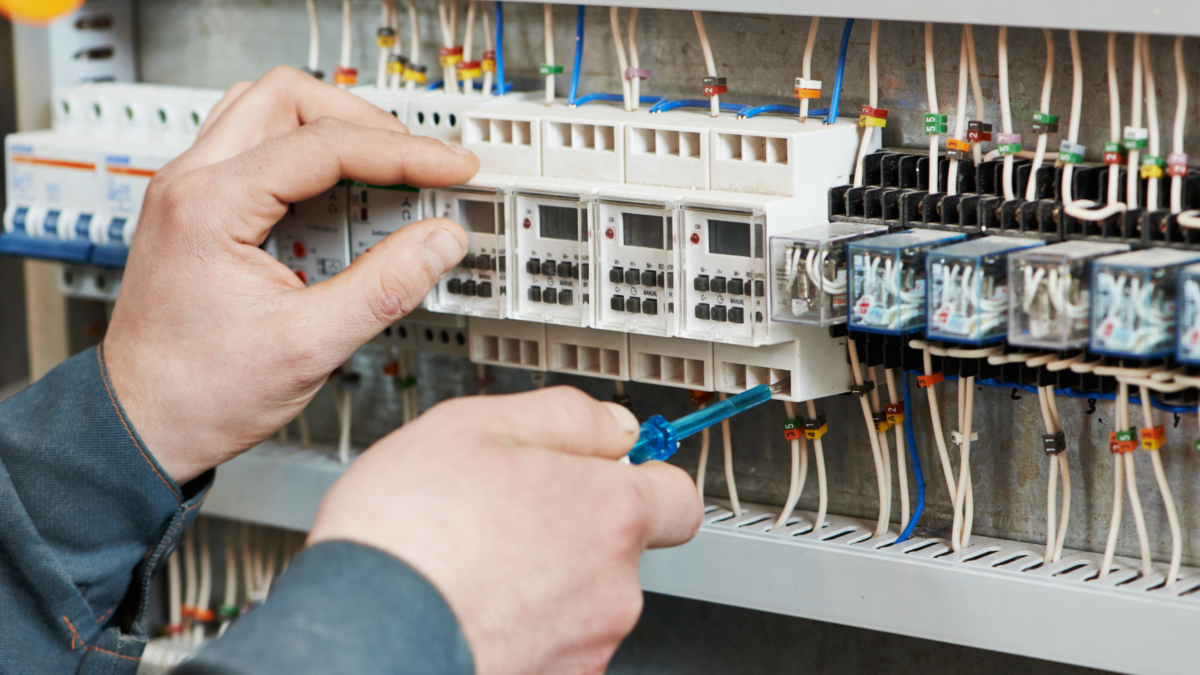
Preparing Your Commercial Property for Winter: A Practical Guide for UK Businesses
December 17, 2024
Electrical Maintenance in the UK: The Benefits for Businesses
December 17, 2024Common Electrical Issues in Commercial Properties: What UK Businesses Need to Know
Electrical systems are the backbone of any commercial property, powering everything from lighting and office equipment to industrial machinery. However, many businesses face electrical issues that can disrupt operations, pose significant safety risks, and even result in costly repairs if left unaddressed.
In this blog, we will identify key problems and how to fix them, highlighting how to get ahead of issues that could arise and avoid them altogether. After all, no one wants to feel like they’re working on the set of a horror movie with flickering lights and ominous power surges!
Overloaded Circuits
Overloaded circuits occur when too many devices or appliances are plugged into a single electrical circuit, drawing more power than the system is designed to handle. This can cause the circuit to overheat, tripping the circuit breaker or, worse, leading to an electrical fire. To be safe, it’s advisable to have an electrician assess your electrical load and distribute devices more evenly across different circuits. There’s also an option to upgrade your electrical system to handle the increased demand, especially in a commercial property with a higher volume of employees, or machinery being operated.
Faulty Wiring or Loose Connections
Faulty wiring or loose connections can result from poor installation, wear and tear, or accidental damage. This can cause intermittent power loss and short circuits, leading to potentially worse problems if not addressed.
To keep wiring up to date with UK regulations and safe for those working in the property, regular inspections are essential to spot any issues before they become a major hazard. Some key warnings that there could be a wiring issue, include flickering lights or power that is on one minute, and off the next. This could be a sign of a damaged or loose connection that requires an electrician to look into it promptly
Flickering or Dimming Lights
Flickering or dimming lights are often a sign of a voltage fluctuation or electrical load problems. It may indicate issues with the light fixtures themselves, loose wiring, or even problems with the power supply to the building.
To avoid further issues arising, start by replacing any faulty or old bulbs which can sometimes be the reason that the bulb is flickering. If the issue persists, there could be a more serious problem with the electrical system, so best to consult a professional.
Did you know that the IET Wiring Regulations, BS 7671:2018, require an EICR (Electrical Installation Condition Report) on commercial electrical installations to be carried out every five years?
Power Surges & Surge Protection Issues
Power surges or transient overvoltage predominantly occurs through lighting strikes or from issues within the grid, This can damage sensitive equipment such as computers, servers, machinery and emergency systems such as fire alarms and emergency lighting.
Regular maintenance is key to ensuring electrical systems are properly managed, so it’s advisable to check existing surge protection to ensure all systems are up to date.
Top Tip: Install surge protection. Invest in surge protection devices (SPDs) for all critical equipment to protect against voltage spikes.
Malfunctioning Emergency Lighting
Emergency lighting is essential to guide employees to safety in the event of an incident, such as a fire or power failure, therefore it is essential that emergency lighting is tested regularly. These tests will highlight if any equipment is malfunctioning, so it can be resolved. An example of this would be a light flickering on an emergency exit route. It can be replaced or re-wired in case of an emergency.
Did you know The British Standard for emergency lighting is BS 5266-1. This standard provides guidelines and regulations for emergency lighting systems in the UK, including how to install, maintain, and ensure the functionality of emergency lighting systems.
Blown Fuses / Tripping Circuit Breakers
Blown fuses or tripped circuit breakers are often the result of overloading a circuit, a short circuit, or faulty equipment. These are safety mechanisms designed to prevent overheating or electrical fires but can cause downtime if they happen frequently. To fix these issues, an electrician can identify the cause to determine where the issues are coming from, which if found to be faulty, would result in a system update being needed, or a device needing to be replaced, like a faulty toaster in an office that keeps tripping the circuit.
Top Tip: Ensure circuit breakers are appropriately rated to the cables that they are protecting, ensure they have not been tampered with or bypassed in any way.
Staying proactive and aware of electrical safety within your property will not only help you comply with UK law but also prevent costly downtime and potential hazards in the future.
Don’t sit in the dark when it comes to electrical issues. With free no-obligation advice and quotations, let us see what we can do for you. Contact us today.




